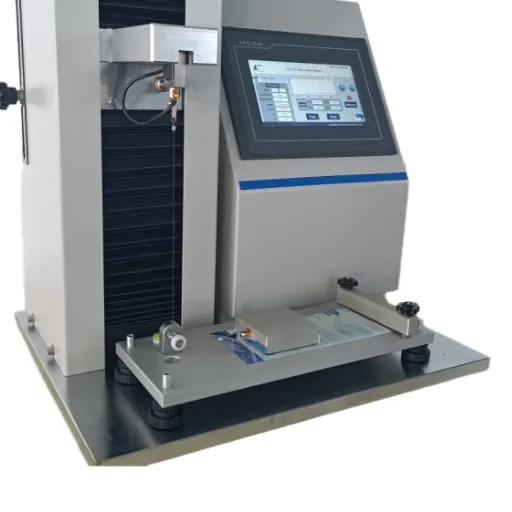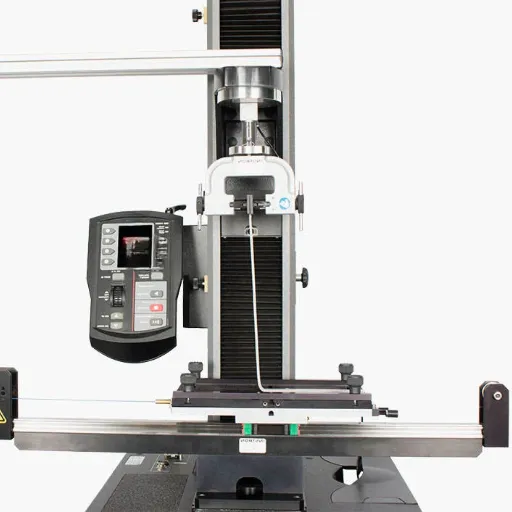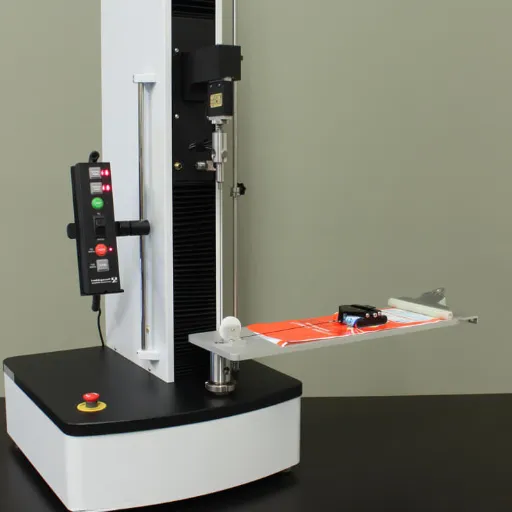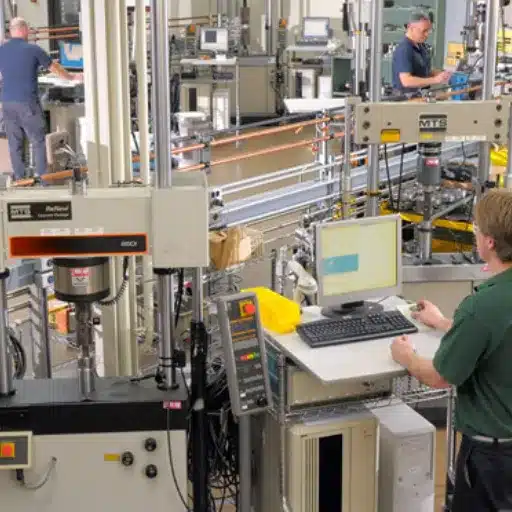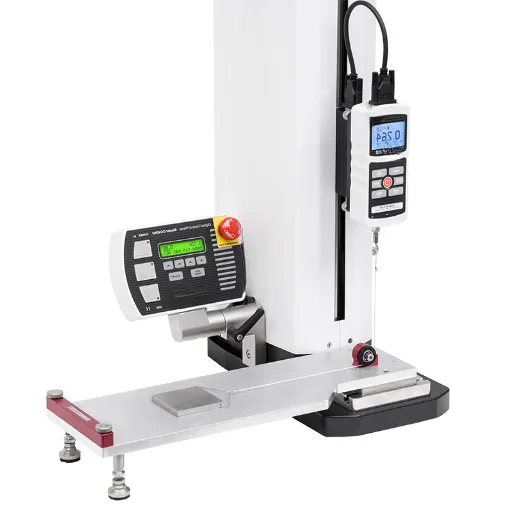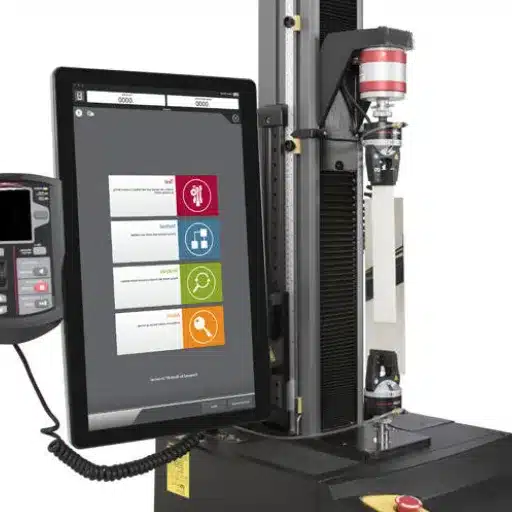Testing the friction coefficient is one of the most important parts of getting to know how materials interact with each other and the performance of these materials in practical applications. The ASTM D1894 standard has turned out to be one of the most reliable ways of assessing static and kinetic friction of plastics, films, coatings, and other materials. The present blog post is a comprehensive guide to the ASTM D1894 testing method and the industrial physics behind it. No matter if you are involved in the packaging, manufacturing, or quality control area, this article will be a source of precious information about the role of friction in materials, its importance, and how accurate testing methods can affect product efficiency and safety. Stay with us to discover useful tips, testing essentials, and deeper knowledge that will help you advance your expertise in material science.
Understanding Friction and Coefficient of Friction
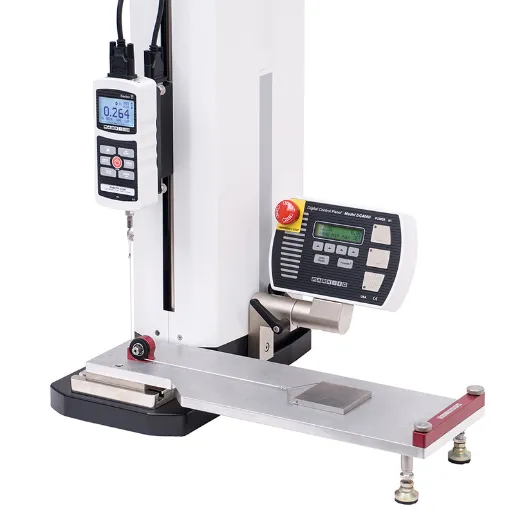
Theoretical Foundations of Friction
Friction is the resistance that comes across when two surfaces slide or try to slide over each other. It is a force that negates the movement and comes into existence due to the interactions between the minute bumps on the surfaces of the materials in contact. This interaction might also include the adhesive forces between the molecules of the materials. Friction plays an important role in many processes, it can either cause wear of the material or it can even enhance energy efficiency, depending on the context.
The coefficient of friction (COF) is used to quantify the amount of friction that is present between two surfaces. The COF is determined as the ratio of the frictional force to the normal force acting between the surfaces. The values of COF can vary dramatically depending on a number of factors, such as the nature of the surfaces, their roughness, and the presence of any lubricant. It is important to note that there are two types of COF—static COF, which is the friction that opposes motion before it begins, and kinetic COF, which is applicable once the motion has started.
Knowledge of friction and its coefficient is indispensable in product designing and materials selection in industries like packaging and manufacturing. Also, accurate test methods for friction measurement guarantee product safety and performance by elucidating the optimal material properties and surface conditions. These understandings, in turn, facilitate better control over the quality, durability, and efficiency of materials in their intended applications.
Types of Coefficients of Friction
Friction coefficients are mainly classified into two types: static friction and kinetic (or dynamic) friction. These coefficients are without the dimension values that measure the force that comes between two surfaces in contact, hence giving the very important interaction insight.
Static Friction
The coefficient of static friction comes into play when both surfaces are not in motion concerning each other. It is the force that has to be applied to overcome the resistance to motion caused at the beginning. Static friction always operates up to a certain maximum value, which is determined by the characteristics of the surfaces and the normal force that is applied to them. Static friction for example, is the reason objects do not slide down an inclined plane but remain still up to a certain angle.
Kinetic Friction
The coefficient of kinetic friction is taken into account when two surfaces are in continuous rubbing contact. Usually, it is smaller than the coefficient of static friction for the same pair of materials. The kinetic friction value is of great help in estimating the force required to keep a constant speed. Knowing about kinetic friction is of utmost importance in the area of moving systems like conveyor belts, braking of vehicles, etc.
These coefficients of friction are the foundation in the evaluation and improvement of the systems in which surface interactions are the active, thus, assuring the correct design and safe operation in both industrial and daily life situations.
Coefficient of Friction in Engineering: A Need
The friction coefficient is a higher standpoint in the township of engineering because it assists in the whole process from design to working of different mechanical and structural systems. It clarifies the relationship between two surfaces and thus helps engineers to predict and control forces, e.g., traction, resistance, and wear, with great accuracy. Moreover, this is extremely crucial in machines, transport, and construction, to name a few, where safe and efficient running of operations depends on the surface interactions that are not only reliable but also quick.
In the case of mechanical systems like gears and conveyor belts, knowing the coefficient of friction engineers will be able to bring about optimum energy consumption and decimate the wear and tear of the components to the highest level. To illustrate, the right selection of materials and coatings with the right friction properties can greatly increase the lifetime and performance of such systems. Likewise, in automotive applications, e.g., tire design, and braking systems, having the right calculation of friction coefficients allows better control and stability leading to fewer accidents.
The coefficient of friction is a factor of utmost importance in structural engineering, as it directly influences the choice of materials and connection designs, etc. For example, where a bridge or building stands, the engineer will have to take into consideration friction, in order to keep the structural components steady under different loads and conditions. By means of calculations and tests, the friction coefficients thereby contribute to the safer, more efficient systems and they are a basic building block in modern engineering practices.
ASTM D1894: Standard Test Method for Coefficient of Friction
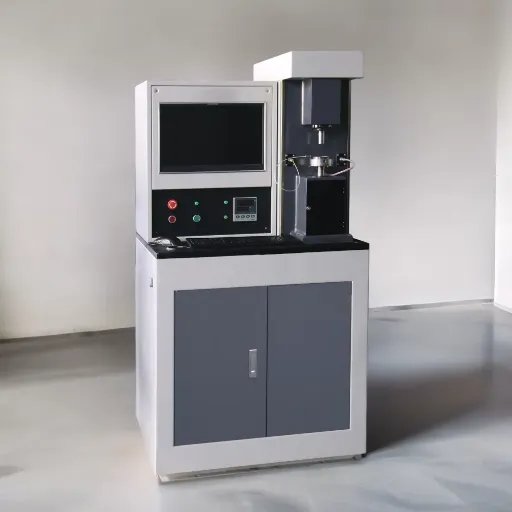
Overview of ASTM D1894
ASTM D1894 is a common testing method that measures the coefficient of friction (COF) for plastic films and sheeting. The test determines both static and kinetic friction, which are the main characteristics of different surfaces of the material and its applicability in different fields. The procedure is even with plastics and, among others, it is the most important one in the packaging industry and the manufacturing of goods where surface interaction is crucial for performance.
The measurement of static friction is conducted by applying force on the surface of the specified surface until movement is initiated between the stationary material and that surface. The frictional force is then measured and is called the kinetic frictional force. When these results are obtained, they will help to understand the movements that may occur during handling, processing or using the materials. For instance, a high COF might mean that sliding or movement is difficult, while a low COF indicates a smoother interaction.
In the testing procedure, the film or sheet sample is positioned against another material and a certain testing procedure is followed utilizing the exacting apparatus. The data generated enables manufacturers to evaluate consistency, control quality, and fine-tune materials to improve their performance. By following ASTM D1894, industries guarantee high levels of safety, reliability, and efficiency in their products.
Significance of ASTM Standards in Friction Testing
Friction testing standards from ASTM are of utmost importance, as they offer a stable and trustworthy framework for performance assessment of materials. The standards, for instance, ASTM D1894, will be there to assure that the entire testing procedure is the same for all, thereby allowing accurate data comparisons not only among materials but also between different industries. Such uniformity is indispensable for those manufacturers who are out to keep their products quality and safety standards up.
By following ASTM standards, sectors can uncover possible problems early on in the manufacturing process. The precise friction data allows the producers to make the right changes in the materials, so that the end product will meet the performance criteria. This leads to longer life, safer products, and better functionality, all of which are key factors for both customer satisfaction and adherence to regulations.
In addition to this, the application of ASTM standards also reinforces the global industry’s compatibility. The use of the internationally recognized standard methods enables the organizations to not only speed up the testing but also make the collaborations for cross-border easier which leads to cost reduction and the assurance that products will have the same performance criteria as the world’s best which consumers in such different markets will regard as trustworthy and reliable.
Test Procedure According to ASTM D1894
The ASTM D1894 standard prescribes a specific procedure for finding out the coefficient of friction of plastic film and sheeting. This method consists of two main parts—a sled that is weighted and a plane that is smooth. While one part is the plastic sample that is fixed to the sled, the other part is another sample of the same material that is laid on the surface. The friction values of both static and kinetic nature are evaluated by measuring the force which is necessary to drag the sled across the surface at the same speed.
At the very start of the test, the materials that are going to be used should be well prepared and cut according to the standard dimensions. A certain weight is put on the sled, and the pulling force by means of the testing machine is made constant. The test through the use of exact instruments records the initial force that is needed to break static friction and a steady force that is required to keep the movement, kinetic friction value is determined. These measurements are very important to know the material’s suitability in specific applications like packaging or surface interactions.
The outcome of this operation gives the main points of the material’s usability by revealing its sliding behavior and the chances for sticking or getting a strong resistance. A low coefficient of friction is usually taken as a sign of smoother performance while higher values may be considered as resistance to movement. These insights are very helpful to the manufacturers in the process of making their products and assuring that they perform well while being up to the quality standards which are very important for the applications they are going to be used in.
Testing Equipment for Coefficient of Friction
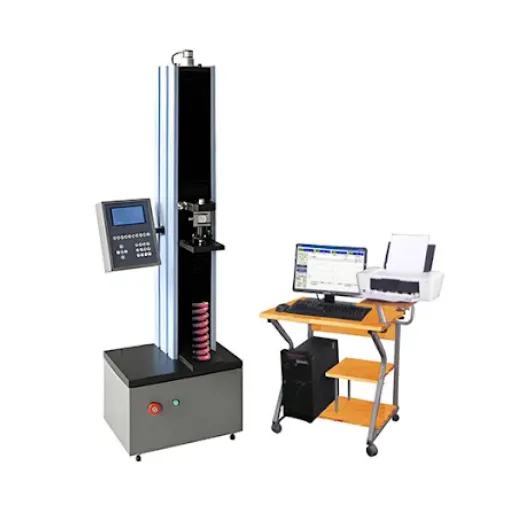
Types of Coefficient of Friction Testing Equipment
The equipment used for coefficiency of friction testing can basically be divided into two categories: static and dynamic testing devices. Static testing instruments are for determining the force required to start the movement between two surfaces and consequently finding out the static coefficient of friction. This is very important for applications where motion prevention is a main concern, like in braking or gripping systems. Usually, weight-based measurement or motorized systems are used by these devices to yield the results very accurately.
In contrast, dynamic testing machines are the ones that measure the coefficient of friction during the sliding motion itself. It is of great significance for those materials and products which are to be used in continuous movement applications like conveyor belts or fabrics. These machines are usually working at controlled speeds in order to mimic real life environments and provide the data that is consistent and reliable for further analysis.
Moreover, there are some systems that combine both static and dynamic testing capabilities that offer more comprehensive insights into the material behavior. This type of equipment is mainly used in the sectors of automotive, packaging, and aerospace industries where the standards of quality are very high. By taking into account the detailed measurements of both friction coefficients, the manufacturers are able to ensure that their products comply not only with performance but also with safety requirements in a very effective manner.
Universal Testing Machine and Its Applications
A Universal Testing Machine (UTM) is a very important device in the friction coefficient testing area, as it renders the measurements of the materials’ frictional properties to be very accurate and trustworthy. The machine works by slowly applying a preset force or weight to a sample under test, thus permitting the manufacturer to get very exact figures for both static and dynamic friction coefficients. Such measurements are immensely useful in pinpointing materials’ various interactions and, as a result, promoting their performance and even providing safety.
The UTM is a common tool in production and other industries that deal with automotive, packaging, and aerospace to discover and confirm the properties of materials. Coefficient of friction testing is one of the major steps in the upcoming very high-tech world, where grip, slip resistance, or even surface interactions are critical in tire manufacturing, conveyor belts, or protective coatings. Companies are given the advantage of running through different scenarios and material assessments that are not just effective but also very good for their product development and quality assurance.
The tests not only help the manufacturers to comply with stringent government regulations and performance requirements but also lower the likelihood of a material failure. Industries that rely on UTM-based friction coefficient testing can expect to get product reliability improved, consumer safety increased and being able to catch up with or even surpass their competitors in the respective markets.
Choosing the Right Tester for Your Needs
The process of selecting a tester that best suits your needs begins with getting a clear understanding of your material and the application’s specific requirements. First of all, you need to determine the kind of test you want to carry out, to mention but a few, the testing kinds are tension, compression, or friction coefficient testing. Also, think of the different categories of materials you deal with and the testing conditions they require, such as load capacity, speed, and environmental factors like temperature.
The next step is to check the specifications of the different testing machines that are available. The tester that you are going to use should have enough load capacity and should be precise at that level for handling your materials. Also, features that improve usability like user-friendly interfaces, automated functions, and reliable software for data analysis, should be looked for because these can make the testing process more efficient and accurate.
At last, think about the durability and maintenance of the tester in the long run. Machines that are made of high-quality materials and come with strong customer support will ensure reliable performance for a long time. Make sure that the tester fits your financial plan while at the same time meeting all the key requirements regarding precision, user-friendliness, and reliability. It might be time-consuming, but a proper assessment of your requirements and the tester’s features will guide you to make a reliable and cost-effective choice for your applications.
Test Methods for Coefficient of Friction
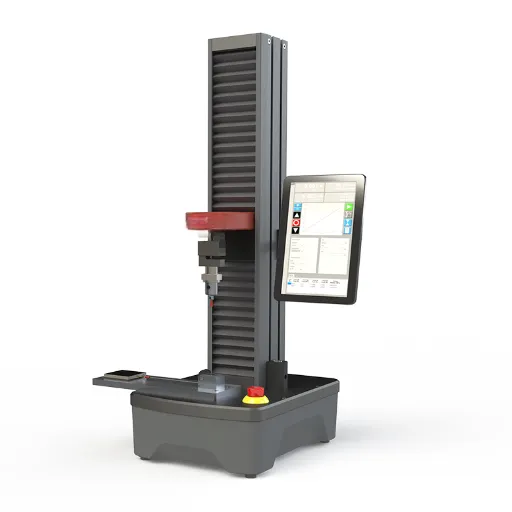
Different Approaches to Conducting COF Tests
The coefficient of friction (COF) can be measured by several methods which are quite different but can still be grouped into the ones applying to the particular Application and Material. The prevailing method, which is accepted worldwide for the general testing, still makes use of the horizontal plane where the material to be tested is put against a surface that is already specified. The COF is mathematically determined through the ratio of the force applied to move the material over the static force (normal force). This way of doing things is very easy, effective, and recognized by the whole industry for testing the COF in general.
Inclined-plane testing is another method that represents the opposite part of the spectrum. The surface of the material to be tested is slowly tilted so that eventually motion between two of the surfaces starts. The angle at which the motion begins is noted and the COF is computed through the use of simple trigonometric calculations. This technique is especially suitable for getting a very good measurement of the static COF that indicates the resistance before the motion takes place and thus it is very common in quality control processes for industrial applications.
In the end, rotational methods can be used in quite a few more complicated or active testing situations. The tests of this kind make use of a rotating disc with a specified surface that is controlled and the COF is measured combining both the static and the kinetic under many different conditions such as speed changes, pressure variations, or altering environmental factors. Rotational methods are extremely accurate and are often used in the industries where friction performance is of utmost importance, like in the car production and aircraft design. It is through the appropriate selection of the specific method that one will reach the goal of showing the true property of the friction which will be both accurate and reliable data.
Comparative Analysis of Test Methods
The comparison of different methods for analyzing friction will reveal that none is better than the others, since their suitability is based on application, the tested materials, and the environmental conditions. Rotational testing and linear sliding are among the major testing methods used; however, each comes with its own advantages. On the other hand, rubber and steel are used in the linear sliding test, which is simple to execute and allows observing the frictional behavior along the linear path.
Environmental conditions are very critical factors that affect the performance of the various test methods. For example, some methods can tolerate extreme temperatures, while others can tolerate humidity or pressure variations better. A controlled lab environment may alter the friction tendencies of the materials under test, while linear sliding may even result in field studies being performed under different conditions. An example of such conversion is the automotive and aerospace industries, which demand accurate results from the selected method to reflect real-world performance.
At last, the decision on the test methods should consider the trade-off between precision, cost, and convenience. Precise tests like rotational methods might be applicable for high-tech industries, but simpler methods like linear tests are the widely used ones those possessing standard testing requirements are already sufficient. Simply put, the testing method should correspond with the application to deliver trustworthy and reproducible results.
Interpreting COF Test Results
One essential factor in the evaluation of a material’s performance in various applications is understanding the results of Coefficient of Friction (COF) tests. The COF number gives an idea about the friction; it is relatively easier for the two surfaces to slide past each other if the value is lower and harder if the value is higher. The different materials with given COF values are selected depending on the different requirements of the application on the friction side; for instance, smoothness in movement in mechanical systems through reduced friction or grip and safety in flooring through increased friction, etc.
One important factor to bear in mind when interpreting COF results is the testing environment. Surface preparation, temperature, and humidity can all impact the frictional properties of a material. For instance, a COF value obtained in a dry environment may be very different from one measured in a wet or lubricated environment. It is important to ensure that test conditions match the actual usage environment in order to get accurate and meaningful results.
Moreover, the COF number must be assessed together with the relevant industry standards and performance expectations. This practice helps manufacturers and engineers to recognize whether the material is fit for the safety, durability, and efficiency requirements. In case of applications where reliability is of utmost importance consistency in COF results across different tests can also serve as a guarantee for the suitability of the material. By analyzing and applying COF test data meticulously, companies can make the right choices that lead to improvements in product quality and functionality.
Emerging Trends in Coefficient of Friction Testing
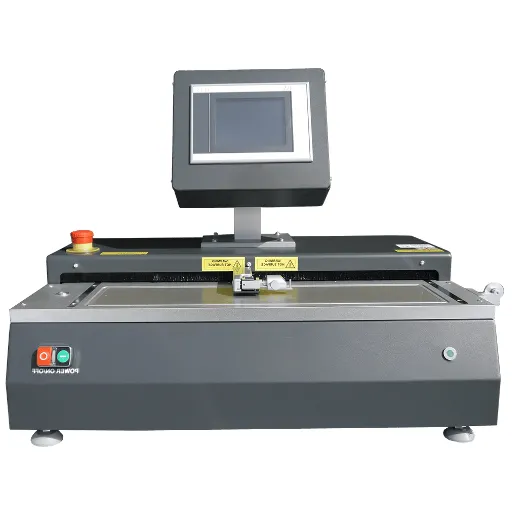
Testing Equipment Technology Developments
Testing equipment technology developments have drastically changed the performance, dependability, and Coefficient of Friction (COF) testing efficiency. Current devices are fitted with highly accurate sensors and robotics that are capable of totally eliminating human errors and providing unvarying results. The interfaces are digital and there is software integration that allows for real-time capturing, processing, and analyzing of test data to provide quicker insights compared to traditional ways.
In addition, automation has made the testing process less complicated and thus increased the number of tests done and their quality. A robot can perform a lot of tests in a very short time while making sure that the force applied and the conditions of measurement are consistently the same. Furthermore, the robotic functionality leads to less dependence on operators and, hence the overall reliability of the results in terms of COF is increased accordingly.
The capability of the versatile testing systems which simulates the different environmental conditions, is considered to be another breakthrough. Such systems, in advocating industries, can be effectively used to evaluate COF in scenarios such as extreme temperatures, humidity, or specific surface textures. This ability makes it easier for the industries to discern the performance of materials in actual applications and, thus, supports the making of better and more reliable product design decisions.
Future Directions in Friction Research
Advancing Materials for Friction Applications
Friction research will probably focus mainly on the use of advanced materials in the future to face particular industrial problems. The use of nanoscale technology can be characterized by the development of friction having very controlled and in fact, application-specific properties for the exact movement or wear-consuming processes. Such innovations could benefit the machines’ efficiency and durability a great deal, thus, the operation costs would be less and so the lifetimes would be longer.
Sustainable and Energy-Efficient Solutions
The second area is the search for methods that would be both sustainable and energy-efficient to reduce friction. Industries are turning towards eco-friendly techniques, e.g. dry lubrication and biodegradable lubricants, to decrease their ecological footprints. This move goes hand in hand with global efforts to modernize and to consume less energy in the friction-heavy processes, where these efforts make quite an impact.
Expanding Computational and AI-Driven Tools
In the same vein, computational modeling and artificial intelligence (AI) will also be the driving force behind friction research in the future. These capabilities can perform very accurate simulations of complex interactions and predict frictional behavior of different conditions. The use of AI allows researchers to perform faster iterations in the optimization of designs and testing of new hypotheses, thus, accelerating innovation at the same time as the costs of conducting experimental trials are being reduced. Such improvements will provide across many industries the friction-related problems with more intelligent and faster solutions.
Regulatory Changes and Their Implications
The changes in regulations regarding the coefficient of friction (COF) testing are directing the modernization of several industries. These modifications are usually motivated by the need to create the strictest standards for safety, sustainability, and consistency in the performance of products. The COF testing methods being updated also serve as a way of brands proving their products and materials have reached top-notch quality through being compliant with the benchmarks set by the regulators, thus eliminating the risks that could occur in the application of the products due to friction or lack of it.
The main implication of the regulatory changes is the direction towards more innovation. Companies are now in the position to release and obtain approval of the new materials and surfaces which comply with the new standards, thus the implementers of the new methods and technologies in testing will help overcome the challenge of the new requirement. Moreover, this is going to be an encouragement for the companies or the industry to spend more on research and development to come up with the products that would be a mix of safety and performance criteria and would be eco-friendly as well.
On the other hand, these adjustments are bringing about more transparency and dependability in the worldwide markets, which gives the manufacturers the opportunity to meet the standards that are internationally acknowledged. Thus, international trade is not the only area in which this change has positive effects, but also the consumer’s faith in the safety and quality of products is similarly increased. In other words, the metamorphosis of the COF testing regulations is symbolic of the fact that we have taken the right path to improved industry practices and consumer products that are more trustworthy.
Frequently Asked Questions (FAQ)
Q: What is the coefficient of friction testing?
A: Coefficient of friction testing is a process to determine the friction that exists between two surfaces. It aids in finding out the extent of resistance one surface gives while being moved over the other, which is very essential in many industries and applications.
Q: How does a coefficient of friction tester work?
A: A coefficient of friction tester or COF tester measures the force that is needed to pull a body across a surface. This activity usually includes a sled that is either still or in motion. The sled’s weight and the surface’s material are very important in calculating the coefficient of friction.
Q: What is the difference between static and kinetic coefficient of friction?
A: The static coefficient of friction is the one that measures the frictional force when two surfaces have no relative motion, while the kinetic coefficient measures the friction when the surfaces are moving relative to each other. Coefficient of friction testing measures both static and kinetic conditions to provide complete data.
Q: What methods are used in coefficient of friction testing?
A: The most common methods are the inclined plane method and the use of a moving sled. The inclined plane method enables one to find out the slide angle which in turn can help to figure out the static and kinetic coefficients of friction for different materials.
Q: Why is it important to measure the coefficient of friction for films and plastic coatings?
A: Coefficient of friction measurement for films and plastic coatings is a must-have as it lets the manufacturer know how the material will perform in a given application. Knowing whether a surface is more slippery or has less friction can impact product design and safety.
Q: How do international standards affect coefficient of friction testing?
A: International standards act as a reference point for coefficient of friction testing which guarantees consistency and reliability of the results from testing done under varying conditions. The standards also assist the industries in quality control and safety compliance.
Q: What factors influence the coefficient of friction measurement?
A: The factors affecting the coefficient of friction measurement are, among others, the material properties of the surfaces, the weight of the sled used during the tests, and the conditions of the surfaces (clean, lubricated, or rough).
Q: Can the coefficient of friction be calculated?
A: The coefficient of friction can indeed be calculated using the formula: COF = F/N, where F is the force required to move the sled and N is the normal force. This computation is useful to know the resistance between surfaces in both static and kinetic conditions.
Q: What are the applications of coefficient of friction testing in various industries?
A: Coefficient of friction testing has its applications in several industries like automotive, packaging, and manufacturing, etc. It is of great help in material testing and thus ensuring that products have the desired performance when subjected to different conditions, thereby improving safety and productivity.
References
- Coefficient of Friction Testing: Procedure, Application, and Standards – Xometry
This resource provides an overview of testing procedures, applications, and standards like ISO 8295. - ASTM D1894 Coefficient of Friction Testing – DDL
A detailed explanation of the ASTM D1894 standard, widely used across industries for coefficient of friction testing. - Coefficient of Friction Testing: Comprehensive Guide – Biopdi
A guide that explains the testing process, including the application of loads and measurement of forces. - An Experimental Study on the Relation Between Friction Force and Load – Nature
A scientific study exploring the relationship between friction force, normal load, and contact area. - Are These Reliable Sources for Static Friction Coefficients? – Reddit
A discussion on verifying static friction coefficients using experimental methods.

